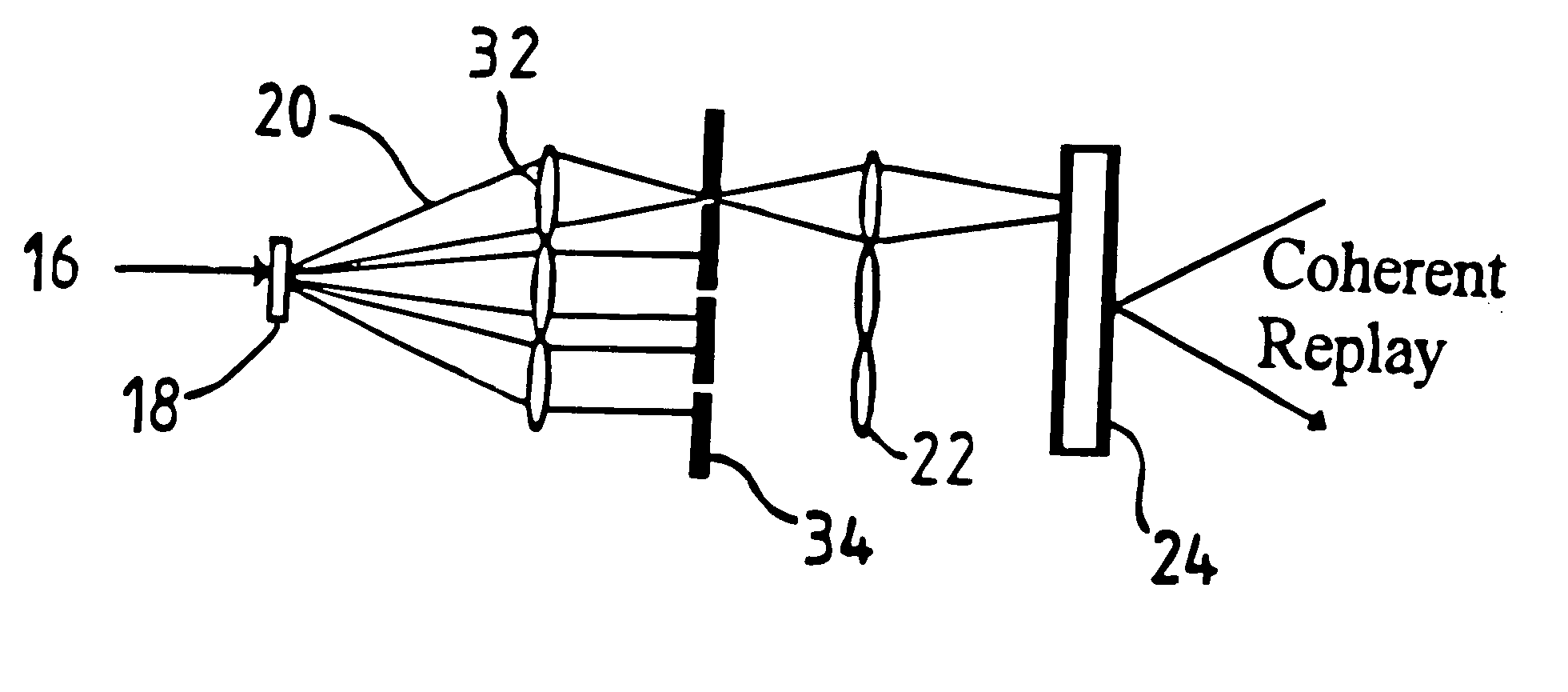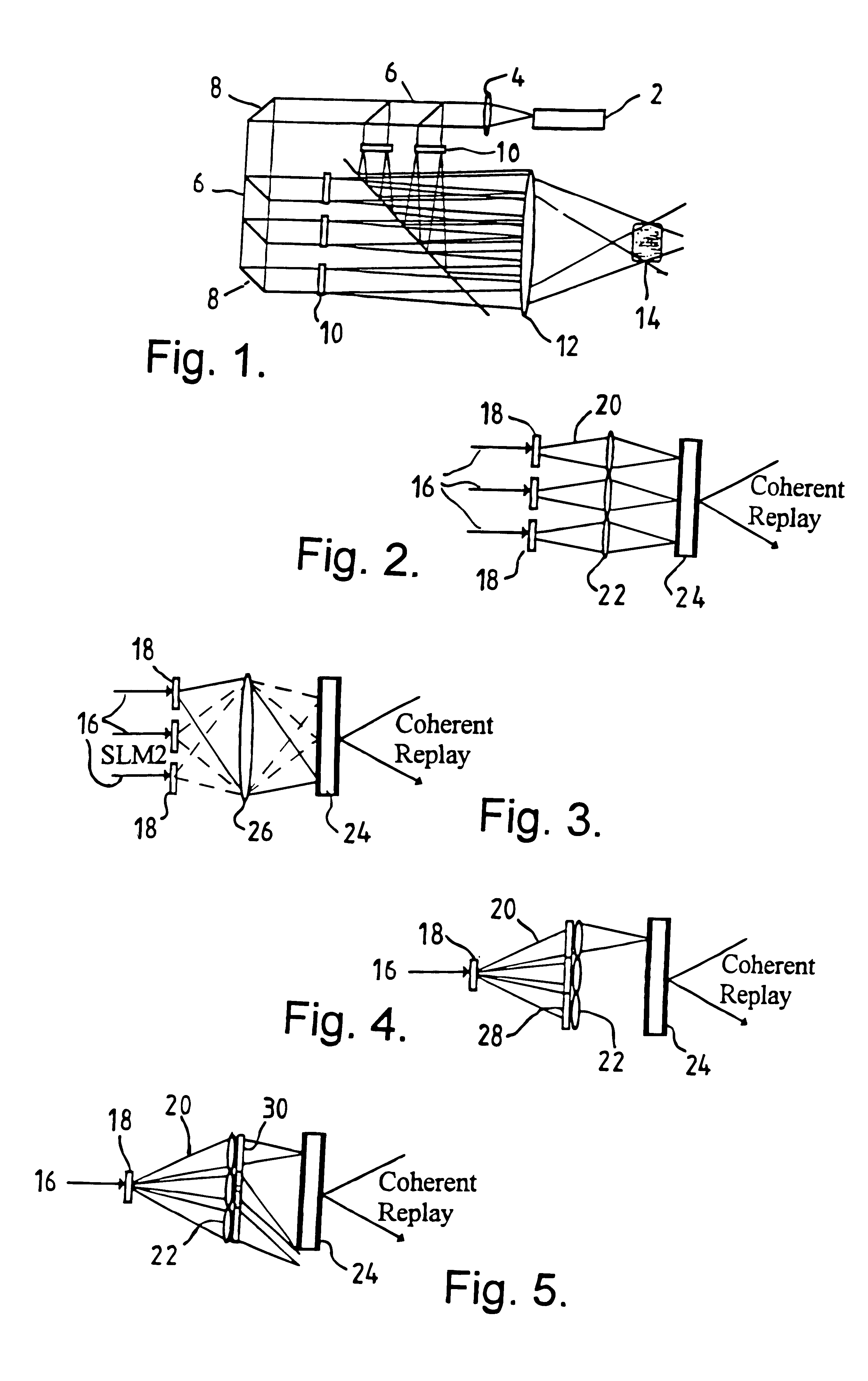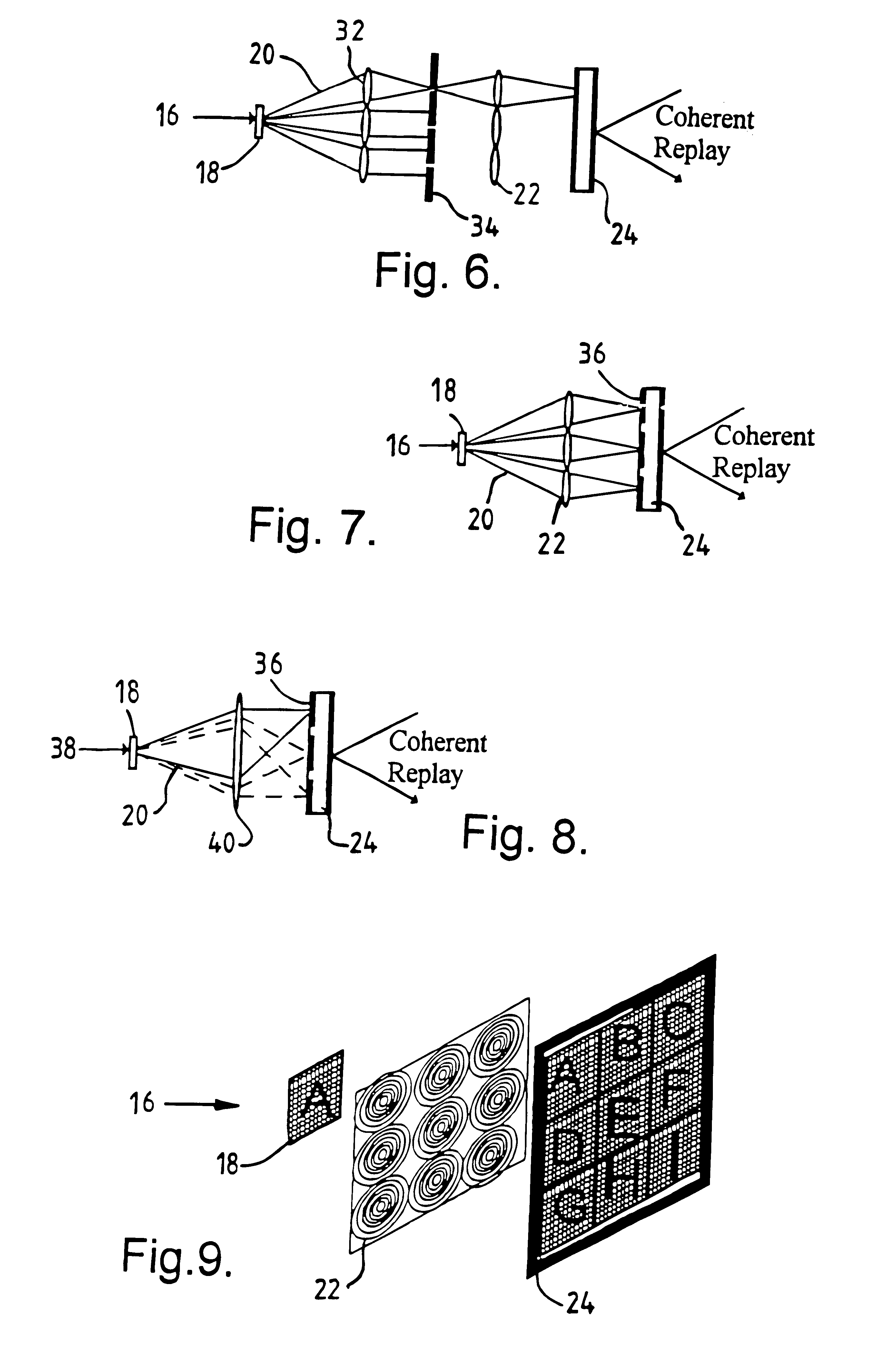System for the production of a dynamic image for display
a dynamic image and display technology, applied in the field of system for the production of dynamic images for display, can solve the problems of low resolution, no conventional spatial light modulators offer the potential to achieve small pixel, and none offer the number of pixels typical of latent image holograms
- Summary
- Abstract
- Description
- Claims
- Application Information
AI Technical Summary
Benefits of technology
Problems solved by technology
Method used
Image
Examples
Embodiment Construction
By referring first to FIG. 1 a known device for the optical recombination of light from many spatial light modulators is shown. A laser light source 2 provides a collimated beam via lens 4 through a plurality of beam splitters 6 and mirrors 8 to spatial light modulators 10 which then allow the light to pass through a final focusing lens 12 to provide a holographic image 14 in a known manner. In order for such a system to be able to replay high complexity high resolution generated holographic images, the light from the spatial light modulators (herein referred to as SLM) 10 needs to be optically recombined. Those skilled in the art will appreciate that the term "complexity" as used herein refers to the number of pixels in the SLM grid. The example shown in FIG. 1 utilises the inherent parallel nature of optical systems. Furthermore the complexity available for the generated holographic image increases in proportion to the number of SLMs used.
Referring now to FIG. 2 it can be seen tha...
PUM
| Property | Measurement | Unit |
|---|---|---|
| electrically addressable | aaaaa | aaaaa |
| ferroelectric | aaaaa | aaaaa |
| phase | aaaaa | aaaaa |
Abstract
Description
Claims
Application Information
 Login to View More
Login to View More - R&D
- Intellectual Property
- Life Sciences
- Materials
- Tech Scout
- Unparalleled Data Quality
- Higher Quality Content
- 60% Fewer Hallucinations
Browse by: Latest US Patents, China's latest patents, Technical Efficacy Thesaurus, Application Domain, Technology Topic, Popular Technical Reports.
© 2025 PatSnap. All rights reserved.Legal|Privacy policy|Modern Slavery Act Transparency Statement|Sitemap|About US| Contact US: help@patsnap.com



